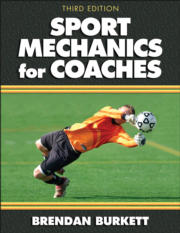First off, let me say that you should NEVER tumble on a concrete surface, and should avoid tumbling on hardwood if possible. In fact, I'm gonna' go out on a limb here and say that if it's not a surface made for tumbling/cheer/gymnastics, it's probably best that you do not tumble on it.
With that being said, what icheer4g does have some merit -- at least when it comes to the take-off of standing tumbling skills like a standing tuck. When a person jumps, they are using their muscles to apply force to the ground. Since physics tells that "every action has an opposite reaction," their body is propelled upward.
The way I think about how springs work, is that it (in a way) delays the those "equal and opposite" forces from crashing into each other right way by changing kinetic energy (moving energy) to potential energy. The looser the spring, the longer the "delay" before the two forces collide. Think of a tumble trak vs a regular trampoline. You shoot into the air quick when on a tumble trak, but don't get as high as a regular trampoline.
Since we don't have a lot of "moving energy" in a standing position, the effect the springs have on the take off of a standing tuck is very little. However, once we are up in the air, and gravity has applied accelerated us toward the floor, we now have kinetic energy. So when you land a tuck, the springs DO take a little bit of the "sting" out of the landing.
So why does a spring floor help running tumbling so much? Because when we run, we have a LOT of kinetic energy to apply to those springs. Between the run itself, and applying even more force with each additional skill (if they are done correctly) we have a tremendous amount of energy at work. That "delay" between the two forces working against each other because of the springs allows our muscles to be able to handle the loads.
Now, on a hard mat, (and even more so on wood or concrete) those two forces collide quicker. All that energy has to go somewhere, and that "somewhere" is your muscles and bones. That is why tumbling is more painful, and causes more injures on hard mat vs. a spring floor.
Hey! WAKE UP! Stop falling asleep! Now that we know the science behind it, let me answer your original question!
You asked is there anything you can do to help make tumbling easier on hard mat; and the answer is YES!
To be able to tumble on a hard mat, you will need to train your body's muscles and bones to be able to withstand the high amounts of stress being put on them when tumbling on hard mat. Lucky for you, the human body is very good at adapting to the stress we put on it. Just like how muscles get bigger/stronger from lifting heavier weights, your muscles will adapt to handle tumbling on the hard mats.
However, also just like lifting weights, how you don't want to jump straight to lifting MASSIVE weights, you don't want to do too much on the hard mat at once. Increasing the demand placed on your body too quickly will leaving you injured. Your body will need to time to adapt by increasing the load over the course of some time.
On top of slowly increasing the amount of tumbling you do on the hard mat, there
is a form of exercise that is specific to building the strength and quickness used during tumbling. It is know as "plyometric exercise" by some and "reactive training" by others. A quick google search should give you some good examples of exercises.
Anyways, I hope I helped answer your question! Feel free to check out my site.
Full-Out: Cheer and Fitness | Tumbling & Perfomance Training for Competitive Cheer I try to write helpful articles relating to cheer and fitness. I haven't posted a lot on there lately because I have been busy. Though I do have about a dozen half-written posts I will be finishing shortly!
